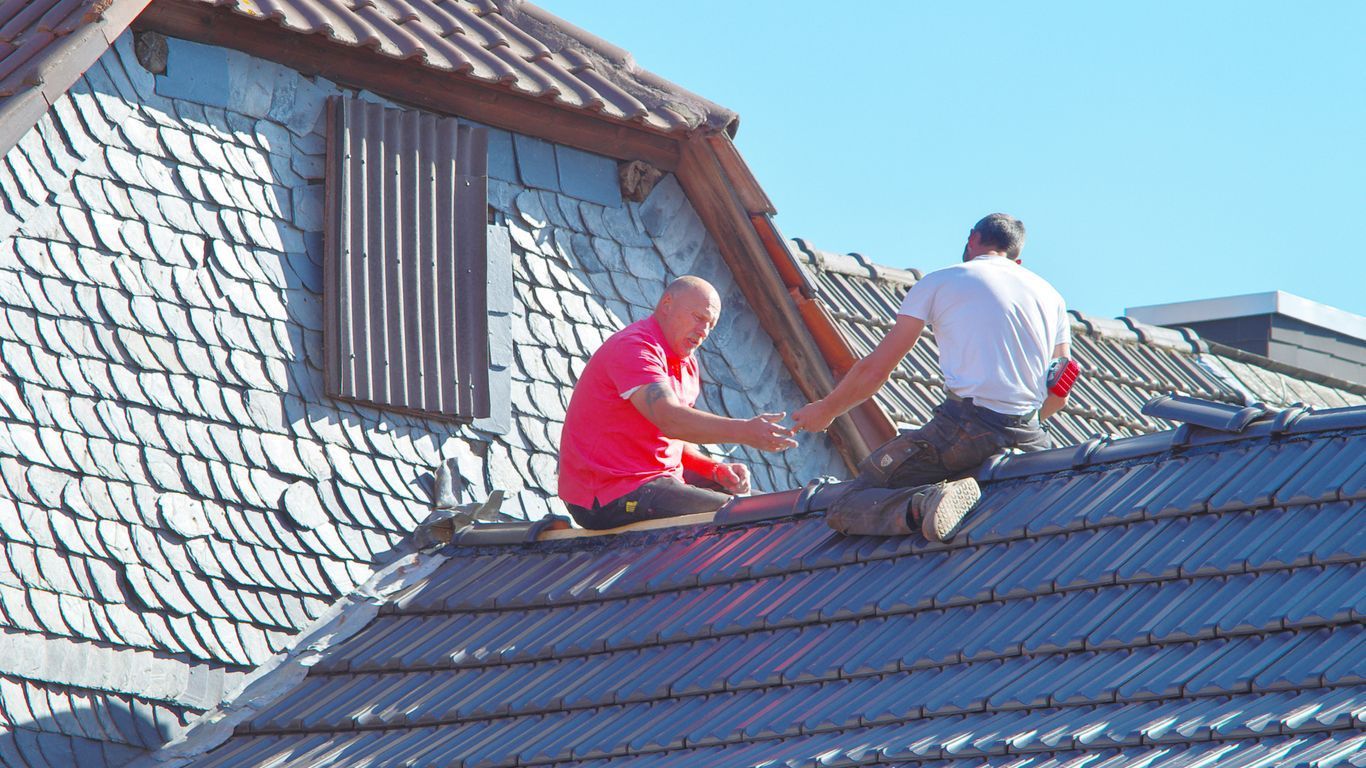Rainy Season in Ringgold or LaFayette? Prep Your Gutters Before It’s Too Late

As the rainy season approaches in Ringgold and LaFayette, it's time to think about your gutters. Neglecting them can lead to some serious issues like leaks and water damage. So, if you want to keep your home safe and dry, now’s the time to prep those gutters and get them ready for the downpours ahead.
Key Takeaways
- Know the different types of gutter systems available.
- Look for signs like sagging or debris buildup that mean your gutters need help.
- Regular cleaning and inspection can save you from bigger problems later.
- Use the right tools to make gutter maintenance easier and safer.
- Check local building codes to ensure your gutters are up to standard.
Understanding Gutter Systems For Rainy Season
Types of Gutter Systems
Okay, so when it comes to gutters, you've got choices. It's not just one-size-fits-all. You've got your standard K-style gutters, which are pretty common. Then there are half-round gutters, which look a bit more traditional. And don't forget about box gutters, often found on older homes. Seamless gutters are also a thing – they're custom-made to fit your house, which means fewer leaks. I think seamless gutters are the best, but they are more expensive.
Importance of Proper Installation
Proper installation is key. Seriously, you can have the best gutters in the world, but if they're not installed right, they're useless. If they aren't angled correctly, water won't drain properly. If the supports aren't strong enough, they'll sag and eventually fall off. I saw my neighbor try to install his own gutters last year, and let's just say it didn't end well. Now he has to pay someone to fix it.
Common Gutter Materials
Gutters come in all sorts of materials, each with its pros and cons. Here's a quick rundown:
- Aluminum: Lightweight, rust-resistant, and relatively cheap. A solid choice for most homes.
- Vinyl: Even cheaper than aluminum, but not as durable. Can crack in cold weather.
- Steel: Stronger than aluminum, but can rust if not properly coated.
- Copper: Looks great and lasts forever, but it's expensive. If you want to spend the money, copper gutters are the way to go.
Choosing the right material depends on your budget, the style of your house, and the climate you live in. Don't just go for the cheapest option – think about long-term durability.
Signs Your Gutters Need Attention
Clogs and Debris Buildup
Okay, so picture this: it's raining, and instead of water flowing nicely through your gutters and downspouts, it's overflowing like a mini-Niagara Falls right over the sides. That's a pretty clear sign you've got some serious clogging going on. Leaves, twigs, and all sorts of other gunk can build up over time, turning your gutters into a swamp. This blockage prevents water from draining properly, which can lead to all sorts of problems.
- Water overflowing during rain.
- Visible debris sticking out of gutters.
- Plants growing in your gutters (yes, it happens!).
Sagging or Misaligned Gutters
Have you ever looked at your gutters and thought, "Hey, those look a little droopy"? Sagging gutters are a major red flag. It usually means they're overloaded with weight, either from debris or standing water. Misalignment is another issue; maybe a section has come loose or shifted. Either way, it's not good. If you notice this, it's time to take action before they pull away completely. You might need gutter repair to fix this.
- Gutters visibly drooping or pulling away from the house.
- Sections of gutter that don't line up properly.
- Gaps between the gutter and the fascia board.
Water Damage Around Your Home
This is where things can get really serious. If your gutters aren't doing their job, water can start to damage your home's foundation, siding, and even the roof. Look for signs like water stains, peeling paint, or even mold growth. These are all indicators that water is going where it shouldn't be. Ignoring these signs can lead to costly repairs down the road.
Water damage isn't just about aesthetics; it can compromise the structural integrity of your home. Addressing gutter issues promptly can prevent long-term problems and save you money in the long run.
- Water stains on siding or foundation.
- Peeling paint or wallpaper inside the house.
- Mold or mildew growth, especially near the foundation.
Essential Gutter Prep Steps
Cleaning Out Debris
Okay, so first things first, you gotta get all the junk out of your gutters. Seriously, this is the most important step. Leaves, twigs, that random tennis ball your neighbor's kid lost months ago – it all needs to go. Clogged gutters can cause water to back up and damage your roof and siding, which is a headache you definitely don't want. I usually grab a sturdy ladder, a pair of gloves (trust me, you'll want them), and either a small bucket or a tarp to dump the gunk into. You can use a gutter scoop, but honestly, sometimes your hands work just as well. Just be careful up there!
- Remove large debris by hand.
- Use a gutter scoop or small tool to loosen compacted material.
- Flush the gutters with a garden hose to remove any remaining small particles. Make sure the downspouts are clear, too!
Inspecting for Damage
Once your gutters are clean, take a good look at them. Are there any cracks, holes, or rust spots? How about sagging sections? These are all signs of trouble. Pay close attention to the seams and joints, as these are common areas for leaks to develop. If you catch these problems early, you can usually fix them yourself before they turn into bigger, more expensive issues. I usually walk around my house twice, just to make sure I don't miss anything. It's also a good idea to check the brackets that hold the gutters to your house. Make sure they're still securely attached and haven't come loose.
Sealing Leaks and Joints
Alright, you've found some leaks. Now what? Don't panic! For small holes and cracks, you can usually use a good quality gutter sealant. Make sure the area is clean and dry before you apply the sealant. Follow the instructions on the product label, and don't be afraid to apply a generous amount. For larger holes or damaged sections, you might need to patch the gutter with a piece of metal flashing or replace the section altogether. This might sound intimidating, but it's actually not that hard. There are plenty of tutorials online that can walk you through the process. Just remember to be careful when working with sharp metal edges.
Sealing leaks and joints is a critical step in gutter maintenance. Addressing these issues promptly prevents water damage and extends the lifespan of your gutter system. Regular inspections and timely repairs can save you money in the long run by avoiding costly replacements.
Tools You Need for Gutter Maintenance
Ladders and Safety Gear
Okay, so first things first: safety. You absolutely need a sturdy ladder. Don't even think about using that rickety old thing in the garage. Get a proper ladder that's tall enough to reach your gutters safely. Make sure it's stable and on level ground. And for goodness' sake, wear some safety gear! That means:
- Gloves (to protect your hands from grime and sharp edges)
- Eye protection (to keep debris out of your eyes)
- A hard hat (just in case something falls)
- Proper footwear (no flip-flops!).
Gutter Cleaning Tools
Alright, now for the fun part – the actual cleaning! You've got a few options here, depending on how brave you are and how clogged your gutters are. You could use a Gutter Sense Cleaning Tool to avoid climbing the ladder. Here's a rundown:
- Gutter scoop: This is a cheap and cheerful option for scooping out loose debris.
- Garden hose with a spray nozzle: Blast away stubborn clogs with a strong stream of water.
- Gutter cleaning attachment for your leaf blower: If you have a leaf blower, this can be a quick way to clear out dry leaves.
- Pressure washer: Be careful with this one! Too much pressure can damage your gutters.
I tried using a pressure washer once and ended up blasting a hole right through my gutter. Lesson learned: start with a low setting and test it out first!
Sealants and Repair Kits
Once you've cleaned your gutters, take a good look for any damage. Small cracks and leaks can be easily fixed with a sealant. For bigger problems, you might need a repair kit. Here's what to look for:
- Gutter sealant: This is a waterproof sealant that you can use to patch up small cracks and leaks.
- Patching material: For larger holes, you might need to use a patch made of metal or plastic.
- Rivets or screws: Use these to secure the patch in place.
- Crimper or pliers: These tools will help you bend and shape the patching material to fit your gutter.
Best Practices for Gutter Installation
Choosing the Right Size
Okay, so you're putting up new gutters. First thing's first: size matters! You can't just slap any old gutter up there and hope for the best. You gotta think about how much rain your roof is gonna shed. A tiny gutter on a huge roof? Disaster waiting to happen. Too big, and it looks ridiculous and costs more than it should.
- Consider the square footage of your roof.
- Check local rainfall averages.
- Talk to a pro if you're unsure. Seriously, it's worth it.
Proper Slope and Pitch
Alright, this is where things can get a little tricky. Gutters aren't supposed to be perfectly level. They need a slight slope so the water actually flows towards the downspouts. If they're flat or, even worse, sloping the wrong way, you're gonna end up with standing water, which leads to clogs, rust, and all sorts of nasty stuff. Getting the slope right is key to a functional gutter system.
- Aim for about a quarter inch of slope for every 10 feet of gutter.
- Use a level to check your work as you go.
- Don't be afraid to make adjustments.
Downspout Placement
Downspouts are the unsung heroes of the gutter world. They're what actually get the water away from your house's foundation. But you can't just stick them anywhere. Think about where the water's going to go. You don't want it pooling right next to your foundation, or running onto your driveway and turning into an ice rink in the winter.
- Position downspouts to direct water away from the foundation.
- Consider using extensions to carry water further.
- Make sure the water drains properly and doesn't create new problems.
Proper downspout placement is often overlooked, but it's vital for preventing water damage. Think about the natural flow of water and how you can best manage it to protect your home. It's not just about getting the water out of the gutters; it's about where it goes next.
Seasonal Gutter Maintenance Tips
Regular Cleaning Schedule
Okay, so you've got your gutters installed, great! But don't just forget about them. Think of your gutters like your car – they need regular check-ups. Ideally, you should be cleaning your gutters at least twice a year: once in the spring and again in the fall. This helps prevent major clogs that can lead to bigger problems down the road. I usually mark it on my calendar so I don't forget. It's way easier to scoop out some leaves than deal with a flooded basement, trust me.
Checking for Ice Dams
If you live in an area that gets snow and ice (like here!), ice dams can be a real issue. An ice dam is basically a buildup of ice at the edge of your roof that prevents melting snow from draining properly. This can force water back under your shingles and into your house. Not good! Keep an eye out for ice buildup after snowstorms. You can use a roof rake to carefully remove snow from the edge of your roof and prevent ice dams from forming. Also, make sure your attic is properly insulated to minimize heat escaping and melting the snow on your roof in the first place. Proper guttering is important for roof care.
Preparing for Storms
Before any big storm hits, take a quick walk around your house and check your gutters. Make sure there aren't any obvious clogs or loose parts. Clear away any branches or debris that could fall and damage your gutters during the storm. It's also a good idea to make sure your downspouts are clear and directing water away from your foundation. A little prep work before the storm can save you a lot of headaches (and money) later on.
Gutters are often overlooked, but they play a vital role in protecting your home from water damage. Taking the time to maintain them throughout the year can prevent costly repairs and keep your home in good shape. Don't wait until you see water pouring over the sides of your gutters to take action. A little bit of preventative maintenance goes a long way.
Here's a simple checklist for storm prep:
- Clear any visible debris from gutters.
- Ensure downspouts are unobstructed.
- Trim overhanging branches.
- Check for loose gutter sections.
Local Regulations and Gutter Standards
Building Codes in Ringgold
Okay, so when it comes to gutters, you might not think there are rules, but surprise! Ringgold has some building codes you should know about. These codes often dictate things like how far your gutters can extend over the property line or how they need to be attached to your house. It's not always super strict, but it's worth checking with the city's building department to avoid any headaches later on. You don't want to install everything and then have to redo it because it doesn't meet code. Trust me, that's a pain.
Permits for Gutter Installation
Do you need a permit to put up gutters? Sometimes! It really depends on the scope of the project. If you're just replacing existing gutters with the same type, you probably don't need one. But if you're altering the structure of your house or changing the drainage significantly, you might. It's always better to be safe than sorry. Call the local permit office and ask. It's a quick call that could save you a lot of trouble. Plus, they can tell you exactly what paperwork you need, if any.
Environmental Considerations
Gutters play a role in managing rainwater runoff, and that has environmental implications. Improperly installed gutters can lead to erosion, water pollution, and even flooding. So, think about where the water is going. Are you directing it away from your foundation? Are you preventing it from pooling in areas that could breed mosquitoes? Also, consider using eco-friendly gutter materials if possible. Every little bit helps, right?
Making sure your gutters are up to snuff isn't just about protecting your house; it's also about being a good neighbor and taking care of the environment. So, do your homework, follow the rules, and keep those gutters flowing smoothly.
Here are some things to keep in mind:
- Proper drainage prevents soil erosion.
- Consider rainwater harvesting to conserve water.
- Avoid directing water onto neighboring properties.
When it comes to gutters, knowing your local rules is super important. Different areas have different standards for how gutters should be installed and maintained. Make sure you check these regulations to keep your home safe and in good shape. For more information on gutter standards in your area, visit our website today!
Final Thoughts on Gutter Prep
As the rainy season rolls in, it’s time to get your gutters ready. Whether you’re in Ringgold or LaFayette, don’t wait until the first downpour hits. Clogged gutters can lead to all sorts of problems, like leaks and water damage. So, grab that ladder and check for debris. If you’re not up for it, maybe call in a pro. Either way, taking care of your gutters now can save you a lot of headaches later. Stay dry and keep your home safe!
Frequently Asked Questions
What are the different types of gutter systems?
There are several types of gutter systems, including K-style, half-round, and box gutters. Each type has its own design and benefits.
Why is it important to install gutters properly?
Proper installation helps prevent water damage to your home, keeps your foundation safe, and avoids issues like mold and pests.
How can I tell if my gutters are clogged?
You might notice water spilling over the sides, or you could see debris like leaves and twigs stuck in the gutters.
What tools do I need to clean my gutters?
You'll need a sturdy ladder, gloves, a scoop or trowel for debris, and possibly a hose to flush them out.
How often should I clean my gutters?
It's a good idea to clean your gutters at least twice a year, especially in the spring and fall when leaves fall.
Do I need a permit to install gutters in Ringgold or LaFayette?
Yes, you may need a permit depending on local building codes, so it's best to check with your city’s regulations.


